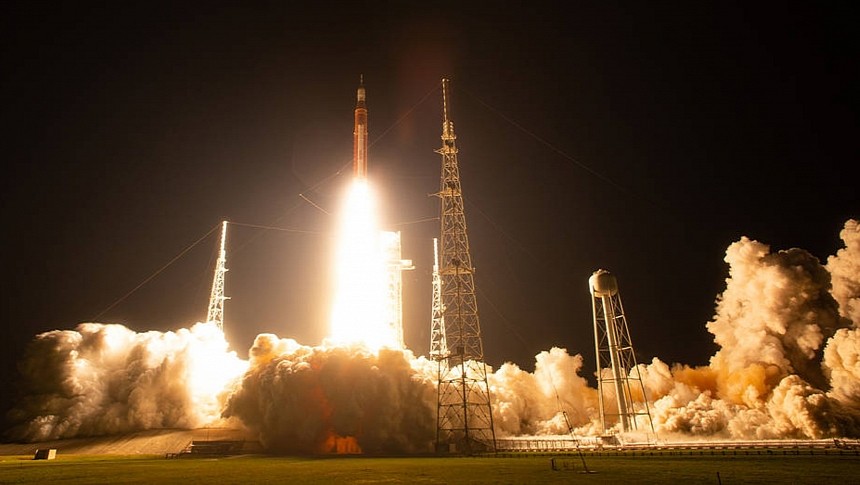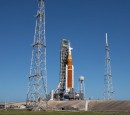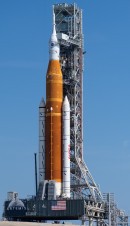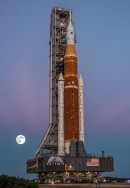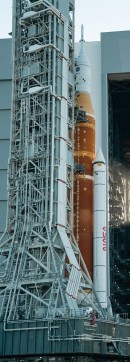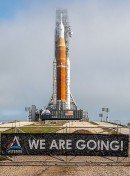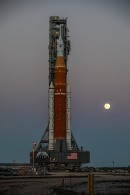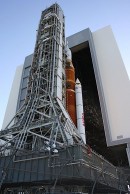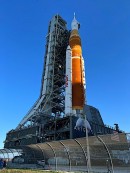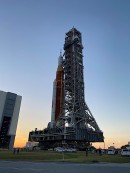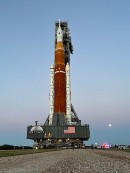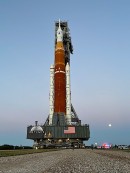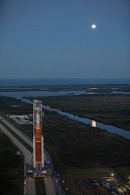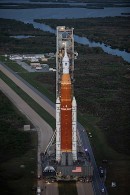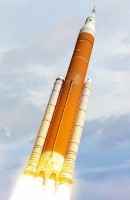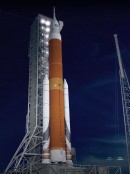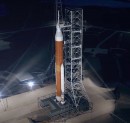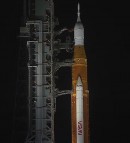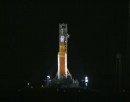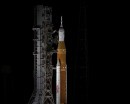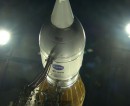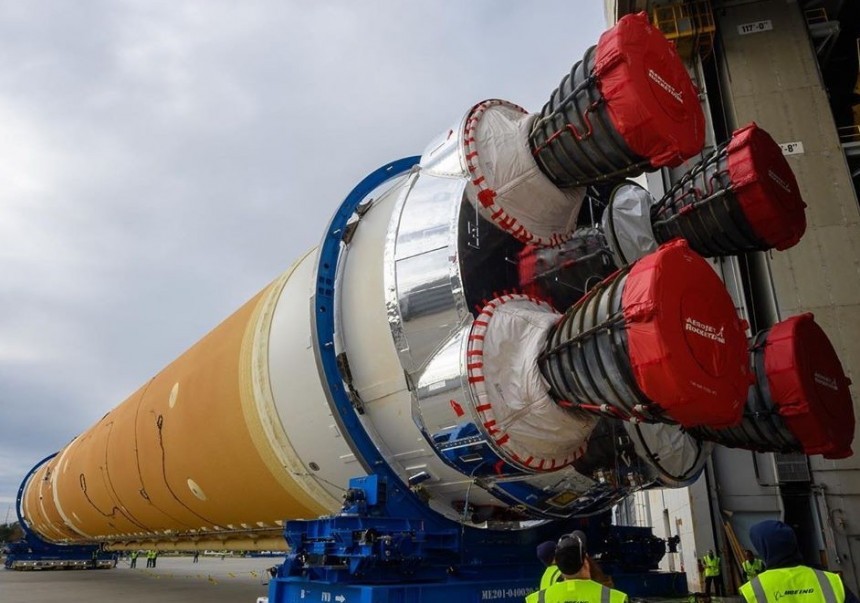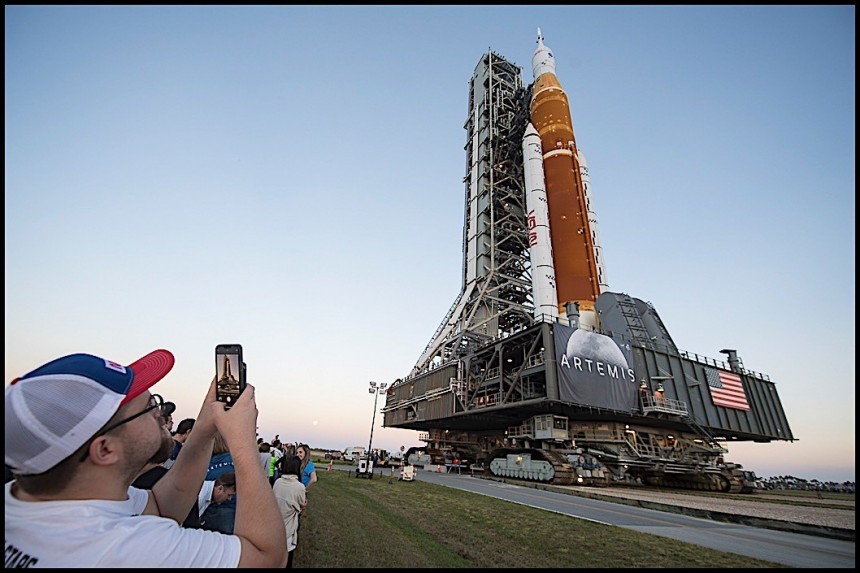Fans of space travel can be fickle people. We should know, we're in that group. We tend to get very angry when space agencies fail to stick to a deadline or start to even slightly go over budget on something. Perhaps never before in the 21st has this been more on display than with NASA's Space Launch System. Make no mistake, being $6 billion over budget as of the last official report is never good for optics. But we have reason to suspect the public at large might be catastrophizing NASA's latest self-indictment.
To understand why that's the case, it's important to understand the story behind not just the SLS program but also NASA's perpetual struggle post-Apollo to field a rocket remotely as powerful or capable as the Saturn V. It's safe to say public interest in human-crewed deep space travel faded as soon as the Soviets were defeated in the First Great Space Race. With its political buying power at an all-time low, so too did NASA's yearly federal budget begin to decline. The Apollo program itself would only last until 1973.
No longer was NASA destined to command three to four percent of the U.S. Government's yearly GDP as it did during the mid-1960s. The last time NASA garnered even one percent of the annual federal budget was back in 1993. Not that engineering icons like Wernher von Braun didn't have the ability to design bigger and better rockets. One of von Braun's design proposals even called for bringing humans to the surface of Mars by the mid-1980s. But awfully tough, if not downright impossible, to build a super-heavy carrier rocket with next to no budget for anything beyond a handful of un-crewed probes and a few Space Shuttle launches each year.
It's in large part thanks to the colossal Space Shuttle program being unable to travel beyond low-Earth orbit (LEO) that humans haven't traveled beyond this point since 1973. It wasn't until late 2004 that a program even remotely close in scale to Apollo would even see the light of day at NASA. This came in the form of Artemis' predecessor, the Constellation program. It was through the Constellation program's slated answer to a carrier rocket, the Ares I and Ares V rockets, that NASA took on a public perception of mere re-hashing old Space Shuttle technology like the RS-25 engines and multi-segment solid rocket boosters (SRBs).
But with a shoestring budget not suitable to cover even a single major U.S. Military service contract, is it any wonder NASA chooses to upgrade existing or "matured" technology instead of starting from scratch? The truth is simple. If NASA didn't implore a substantial degree of lightly "breathed on" Space Shuttle tech in Space Launch System, then we simply don't have an Artemis program at all; no debate, end of discussion. With these kinds of budgetary restraints, beggars have no right to be choosers.
Even with this in mind, it'd be totally unfair to lambast the main engines and SRBs used on the SLS Block I as nothing more than old Space Shuttle tech warmed up in the microwave. Northrop Grumman's novel five-segment solid-rocket booster sports one more core section than the old Space Shuttle and touts roughly 620,000 lbs more propulsive thrust than its predecessors. This extra power goes a long way in accounting for the SLS Block I's eye-watering 8,800,000 lbs of launch thrust. Moreover, the latest variant of the Space Shuttle's RS-25D main engine, the RS-25E that's set to fly after the first four Artemis missions, will soon bring legacy NASA launch hardware into the 2020s.
With a simpler construction featuring fewer wires, cables, and more efficient piping, easier production should result in a much cheaper engine to operate. Meaning that the RS-25E, though expendable, will ultimately allow for even more SLS launches on account of its cheaper operating costs. Speaking of costs, it's pretty hard to ignore that NASA expects to fork upwards of $90 billion into the SLS program by the time the platform is mature in 2025. But it's important not to let the sticker shock fool you; these funds are spread out across roughly 15 years of development since the SLS program commenced in 2011.
It all begs the question, is a roughly $4 billion check written every launch really all that much money anymore? Lest we be reminded what it costs to operate a fleet of fifth-generation stealth fighters on a yearly basis. In the grand scheme of things, the cost of the entire SLS program from 2011 to 2025 and beyond is just a splash in the bucket compared to even a mid-tier, military-industrial service contract. Self-admitted oversights declared by NASA's Office of Inspector General aside, it's hard to argue that the SLS isn't still the most powerful, most capable super-heavy launch platform in the world today by a comfortable margin. Unless SpaceX can figure out how to keep Starship from exploding, this will remain true for the foreseeable future.
If nothing else, it's all the more impressive what NASA and its contractors were able to accomplish without the benefit of an insane budget like Apollo was granted at its start. As we saw after three consecutive launch scrubs with Artemis I, it's all worth it in the end when everything finally goes right. Watching how the first SLS rocket launched almost like a dragster with its mighty main engines and shiny, new SRBs was enough to make all the haters collectively shut their mouths as the rocket-propelled a single Orion spacecraft, serial number 002, on a near flawless uncrewed circumnavigation of the Moon.
As of late May 2022, the SLS is the only modern super-heavy launch vehicle to successfully complete a mission without blowing itself up. Is being comfortably in first place as we kick off the Second Great Space Race worth $6 billion in cost overruns to you? Given the circumstances, we think it's apt to say NASA's making plenty of progress toward getting back to the Moon and beyond. Of course, it's not nearly as much progress as most people gritting their teeth waiting for Artemis II to launch would have liked.
But in a modern America where our leaders struggle to agree when on trivial matters like the debt ceiling, it's hard to envision Congress bending the knee to NASA with a substantial increase in funding any time soon. Unless something changes, expect its budget to remain somewhere around its current estimate of $25.4 billion, plus five percent or so to adjust for inflation each year, or roughly 0.5 percent of the U.S. National GDP.
That is unless the Chinese miraculously manage to put humans on the surface of the Moon before NASA does. In that case, Congress might just let NASA take the gloves off. But in all honesty, that's probably just wishful thinking. We leave you with this final thought. Most folks would have said that humans, in all likelihood, would never step foot on another heavenly body again 25 years ago. Or, at the very least, that more pressing matters here on Earth would prevent such feats from ever being repeated. Now imagine what things will be like 25 years from now. If that doesn't excite you, nothing will.
But what do you think? Should Artemis get a huge boost in funding? Let us know in the comments down below.
No longer was NASA destined to command three to four percent of the U.S. Government's yearly GDP as it did during the mid-1960s. The last time NASA garnered even one percent of the annual federal budget was back in 1993. Not that engineering icons like Wernher von Braun didn't have the ability to design bigger and better rockets. One of von Braun's design proposals even called for bringing humans to the surface of Mars by the mid-1980s. But awfully tough, if not downright impossible, to build a super-heavy carrier rocket with next to no budget for anything beyond a handful of un-crewed probes and a few Space Shuttle launches each year.
It's in large part thanks to the colossal Space Shuttle program being unable to travel beyond low-Earth orbit (LEO) that humans haven't traveled beyond this point since 1973. It wasn't until late 2004 that a program even remotely close in scale to Apollo would even see the light of day at NASA. This came in the form of Artemis' predecessor, the Constellation program. It was through the Constellation program's slated answer to a carrier rocket, the Ares I and Ares V rockets, that NASA took on a public perception of mere re-hashing old Space Shuttle technology like the RS-25 engines and multi-segment solid rocket boosters (SRBs).
But with a shoestring budget not suitable to cover even a single major U.S. Military service contract, is it any wonder NASA chooses to upgrade existing or "matured" technology instead of starting from scratch? The truth is simple. If NASA didn't implore a substantial degree of lightly "breathed on" Space Shuttle tech in Space Launch System, then we simply don't have an Artemis program at all; no debate, end of discussion. With these kinds of budgetary restraints, beggars have no right to be choosers.
With a simpler construction featuring fewer wires, cables, and more efficient piping, easier production should result in a much cheaper engine to operate. Meaning that the RS-25E, though expendable, will ultimately allow for even more SLS launches on account of its cheaper operating costs. Speaking of costs, it's pretty hard to ignore that NASA expects to fork upwards of $90 billion into the SLS program by the time the platform is mature in 2025. But it's important not to let the sticker shock fool you; these funds are spread out across roughly 15 years of development since the SLS program commenced in 2011.
It all begs the question, is a roughly $4 billion check written every launch really all that much money anymore? Lest we be reminded what it costs to operate a fleet of fifth-generation stealth fighters on a yearly basis. In the grand scheme of things, the cost of the entire SLS program from 2011 to 2025 and beyond is just a splash in the bucket compared to even a mid-tier, military-industrial service contract. Self-admitted oversights declared by NASA's Office of Inspector General aside, it's hard to argue that the SLS isn't still the most powerful, most capable super-heavy launch platform in the world today by a comfortable margin. Unless SpaceX can figure out how to keep Starship from exploding, this will remain true for the foreseeable future.
If nothing else, it's all the more impressive what NASA and its contractors were able to accomplish without the benefit of an insane budget like Apollo was granted at its start. As we saw after three consecutive launch scrubs with Artemis I, it's all worth it in the end when everything finally goes right. Watching how the first SLS rocket launched almost like a dragster with its mighty main engines and shiny, new SRBs was enough to make all the haters collectively shut their mouths as the rocket-propelled a single Orion spacecraft, serial number 002, on a near flawless uncrewed circumnavigation of the Moon.
But in a modern America where our leaders struggle to agree when on trivial matters like the debt ceiling, it's hard to envision Congress bending the knee to NASA with a substantial increase in funding any time soon. Unless something changes, expect its budget to remain somewhere around its current estimate of $25.4 billion, plus five percent or so to adjust for inflation each year, or roughly 0.5 percent of the U.S. National GDP.
That is unless the Chinese miraculously manage to put humans on the surface of the Moon before NASA does. In that case, Congress might just let NASA take the gloves off. But in all honesty, that's probably just wishful thinking. We leave you with this final thought. Most folks would have said that humans, in all likelihood, would never step foot on another heavenly body again 25 years ago. Or, at the very least, that more pressing matters here on Earth would prevent such feats from ever being repeated. Now imagine what things will be like 25 years from now. If that doesn't excite you, nothing will.
But what do you think? Should Artemis get a huge boost in funding? Let us know in the comments down below.
